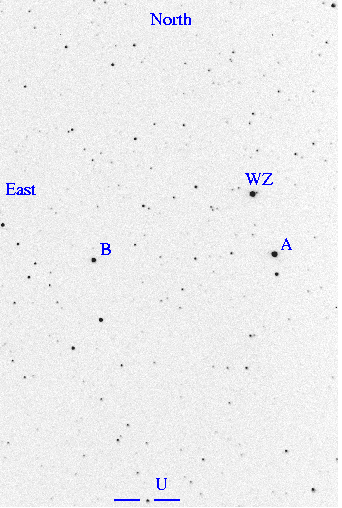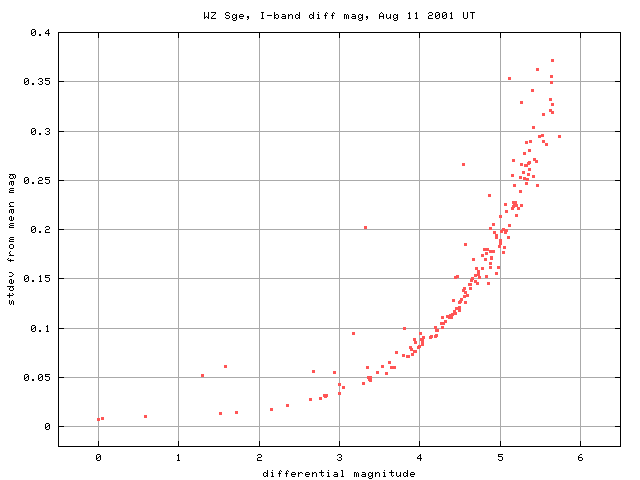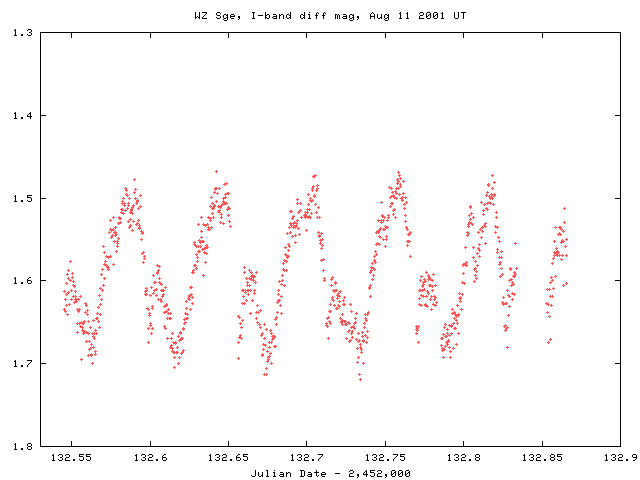
On the night of August 11, 2001 UT, Michael Richmond, Stacey Davis, and Tracy Davis used the RIT Observatory's 10-inch Meade LX200 telescope to monitor WZ Sge. All exposures were taken without the focal reducer, through a I-band filter, onto an SBIG ST-8 CCD camera. Each exposure was 10 seconds long. Due to the design of the SBIG software, the time of each exposure is accurate only to +/- 1 second. The field of view was about 17 by 12 arcminutes; a typical example is shown below:

We subtracted dark current from the images and divided by a median twilight sky flatfield. We ran software to detect all stars more than 4 sigma above the sky, then measured the light from each star within a circular aperture of radius 8.8 arcseconds.
The night was good. There were some light cirrus clouds scattered throughout the sky from sunset to midnight, but it was clear afterwards.
We worked from sunset to sunrise, gathering over 1000 images of the field. We discarded a few images with problems and ended up with 1069 good images. We fed all raw instrumental magnitudes of 194 stars on those images into a program which implemented Honeycutt's inhomogeneous ensemble photometry technique. The solution gave most weight to the bright stars "A" and "B" (marked above). The standard deviation from the mean magnitudes in the solution are shown below, as a function of differential magnitude.

Remember, these data are taken in I-band! The solution placed the mean magnitude of stars "A" = GSC 1612.1830 = HD 191083 and "B" = HD 351517 as follows:
star mean stdev
A 0.0 0.007
B 0.053 0.008
We used star "B" as a check star to detect errors due to clouds or poor images (which clearly were present in the entire night's run). We discarded any image in which star "B" differed from its mean magnitude by more than +/- 3 times its standard deviation.
The final result is 1069 measurements of WZ Sge over a span of seven and a half hours. Here is the light curve:

You can download an ASCII text file with the measurements:
The file has some comments at the top, followed by data lines with 4 numbers per line, like this:
Jul_27.06510 2117.56510 2117.56977 0.046
The columns are:
Last modified 8/22/2001 by MWR.